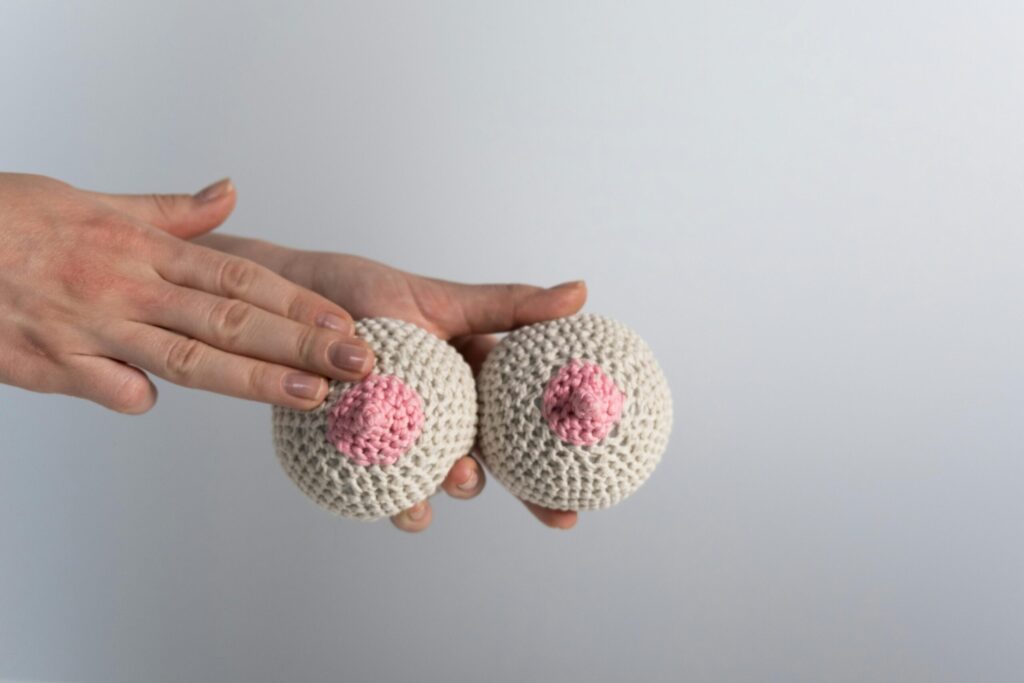If you’re experiencing sore nipples and breast pain while breastfeeding, you’re not alone. As a mother of five children and a midwife with over 20 years of experience, I’ve not only helped countless women through these challenges but experienced them myself. Managing breast discomfort during breastfeeding doesn’t have to mean suffering in silence or giving up on your nursing goals. With the right knowledge and techniques, you can find relief and continue nurturing your little one.
Understanding the Causes of Sore Nipples and Breast Pain
When I had my first baby, despite all my midwifery training, I was shocked by how painful breastfeeding was initially. No one had prepared me for toe-curling nipple pain! What I’ve learned since then is that identifying the underlying cause is the first step toward effective relief.
Common Causes of Nipple Soreness
The most frequent reasons for nipple discomfort include:
- Improper latch: When your baby doesn’t take enough breast tissue into their mouth, your nipple bears the brunt of the pressure.
- Positioning challenges: Awkward positioning can create friction and compression.
- Engorgement: When your breasts become overly full, latching becomes more difficult.
- Tongue or lip ties: Restricted oral tissues can affect how your baby latches and sucks.
- Infection: Conditions like thrush (yeast infection) can cause significant pain.
- Skin conditions: Eczema, dermatitis, or other skin sensitivities can contribute to soreness.
- Nipple anatomy: Flat or inverted nipples may experience more trauma initially.
According to the International Lactation Consultant Association, nearly 80% of breastfeeding mothers experience some nipple discomfort in the early weeks, but persistent pain usually indicates a solvable problem.
Recognizing Different Types of Breast Pain
Breast pain while nursing falls into several categories, each requiring different approaches for relief:
- Initial latch pain: A brief, sharp pain during the first 30 seconds of feeding that quickly subsides.
- Persistent nipple pain: Continues throughout feeding and may indicate latch problems.
- Engorgement pain: Fullness, tenderness, and warmth throughout the breast.
- Clogged duct pain: A tender, possibly red, localized area that feels like a lump.
- Mastitis pain: Intense pain accompanied by flu-like symptoms and inflammation.
- Let-down pain: Sharp, burning, or tingling sensation when milk begins flowing.
When Jasmine, a first-time mom I worked with, described her pain as “like someone taking sandpaper to an open wound,” I knew immediately we were dealing with a thrush infection rather than a simple latch issue. Learning to describe your pain accurately helps identify solutions more quickly.
Immediate Relief for Sore Nipples While Breastfeeding
Let’s start with what you need right now—relief! Managing breast discomfort during breastfeeding begins with these immediate interventions:
Quick Comfort Measures for Nipple Pain
- Start with the less sore side: Begin nursing sessions on your less painful breast to allow for a gentler initial let-down.
- Apply expressed milk: After feeding, express a few drops of breast milk and gently rub it on your nipples. The antimicrobial properties and healing fats promote healing.
- Air dry: Allow your nipples to air dry completely after feedings rather than trapping moisture against damaged skin.
- Use pure lanolin: Apply a small amount of medical-grade lanolin designed for breastfeeding mothers.
- Hydrogel pads: Cooling gel pads can provide significant relief between feedings.
- Warm or cold compresses: Experiment to see which temperature provides more relief for your specific pain.
- Pain relievers if necessary: Consult your healthcare provider about taking ibuprofen or acetaminophen if the pain is severe.
When my third baby arrived with a powerful suck that left me wincing, I found that applying cold tea bags after feeding provided remarkable relief. The natural tannins in black tea have mild astringent and anti-inflammatory properties—a tip I’ve since shared with hundreds of mothers.
Adjusting Your Breastfeeding Technique
Sometimes the fastest route to pain relief comes from modifying how you breastfeed:
- Check positioning and latch: Ensure baby’s mouth covers a large portion of the areola, not just the nipple.
- Try different positions: The football hold or side-lying position may put less pressure on sensitive areas.
- Break suction properly: Always insert a clean finger into the corner of baby’s mouth to break suction before removing them from the breast.
- Use breast compression: Gently compress your breast during feeding to maintain milk flow, reducing the need for baby to suck harder.
- Consider a nursing vacation: Spend a day or two in bed with your baby, nursing frequently in a relaxed environment to reset your breastfeeding relationship.
I’ll never forget working with a mother of twins who was ready to stop breastfeeding due to excruciating pain. When we discovered that changing her nursing position allowed her nipples to heal while continuing to feed her babies, her entire outlook changed. “I felt like I got my power back,” she told me later.
Long-Term Strategies for Managing Breast Discomfort During Breastfeeding
Beyond immediate relief, implementing these strategies can help prevent recurrence:
Healing Damaged Nipples
When nipples are already cracked or damaged:
- Use medical-grade lanolin or nipple cream: Apply after each feeding.
- Consider hydrogel pads: These cooling pads can speed healing between feedings.
- Saline rinse: Mix ½ teaspoon salt in 1 cup warm water and gently rinse nipples after feeding to promote healing.
- Avoid soap: Clean breasts with plain water to prevent drying.
- Change breast pads frequently: Moist environments slow healing and can promote infection.
- Use breast shells: These allow air circulation while protecting sensitive nipples from contact with clothing.
The Academy of Breastfeeding Medicine recommends addressing the underlying cause of nipple damage rather than merely treating symptoms, as continuing to breastfeed with poor positioning can delay healing despite treatment.
Preventing Future Soreness
An ounce of prevention is worth a pound of cure when it comes to managing breast discomfort during breastfeeding:
- Perfect your latch technique: Work with a lactation consultant to ensure optimal positioning.
- Rotate nursing positions: Different positions put pressure on different parts of your nipple and breast.
- Feed at early hunger cues: A frantically hungry baby may latch more aggressively.
- Keep nipples dry between feedings: Change breast pads when they become damp.
- Wear proper-fitting bras: Too tight or poorly fitted bras can contribute to clogged ducts and discomfort.
- Stay hydrated and rested: Your body heals better when you’re taking care of basic needs.
During my years as a midwife, I’ve observed that mothers who take proactive measures and seek help early typically overcome breastfeeding pain more quickly than those who try to power through severe discomfort. There’s incredible wisdom in addressing issues early.
Special Circumstances and Solutions
Some situations require specialized approaches for managing breast discomfort during breastfeeding:
When It’s Thrush
Thrush (yeast infection) can cause intense, burning pain that persists after feeding:
- Watch for symptoms: Shiny, pink, flaky, or itchy nipples, shooting pain during and after feeding, and white patches in baby’s mouth.
- Treat both mother and baby: Both need treatment even if only one shows symptoms.
- Consider probiotics: These may help restore healthy bacterial balance.
- Sanitize pump parts and pacifiers: Yeast can live on surfaces and cause reinfection.
- Reduce sugar intake: Temporarily reducing sugar may help resolve persistent thrush.
When Maria came to me with what she described as “lightning bolts through my breasts,” we identified thrush as the culprit. After appropriate treatment and meticulous hygiene practices, she was pain-free within a week.
Mastitis Management
Mastitis requires prompt attention to prevent serious complications:
- Continue nursing or expressing milk: Despite the pain, emptying the breast is crucial.
- Rest and hydrate: Your body needs extra resources to fight infection.
- Apply warm compresses: Heat helps increase blood flow and milk drainage.
- Take prescribed antibiotics: Complete the full course if they’re prescribed.
- Massage gently: Work from the blocked area toward the nipple.
My own bout with mastitis with my fourth baby came on startlingly fast—I went from feeling fine to feverish and in agony within hours. I’ll never forget nursing through tears while applying warm compresses, but the relief that came from continuing to empty the breast was remarkable.
Raynaud’s Phenomenon
Some mothers experience intense nipple pain due to vasospasm (Raynaud’s phenomenon):
- Identify the symptoms: Nipples that turn white, then blue, then red, with severe pain.
- Apply warmth: Immediately apply warm, dry heat after feeding.
- Avoid cold exposure: Cover breasts quickly after feeding, especially in cold environments.
- Consider supplements: Magnesium and vitamin B6 may help some women (consult your healthcare provider).
- Evaluate caffeine intake: Reducing caffeine helps some women with vasospasm.
A mother I worked with described her Raynaud’s pain as “like someone clamping a clothespin on my nipples for hours.” Once identified, applying warm compresses immediately after feeding and avoiding cold exposure dramatically improved her comfort.
When to Seek Professional Help
While some discomfort is common, certain signs indicate you need professional support:
- Severe or worsening pain that doesn’t improve with basic measures
- Damaged, cracked, or bleeding nipples that don’t begin healing within 24 hours
- Fever or flu-like symptoms which could indicate infection
- White patches in your baby’s mouth or diaper area
- Pain that’s affecting your mental health or causing you to dread feeding
Remember, seeking help isn’t a sign of weakness—it’s a sign of wisdom. As I tell my clients, “You wouldn’t hesitate to call a plumber for a leaking pipe; don’t hesitate to call a lactation expert for a leaking, painful breast!”
Self-Care While Managing Breast Pain
Managing breast discomfort during breastfeeding requires caring for your whole self:
- Rest when possible: Healing requires energy.
- Stay hydrated: Drink water whenever you sit down to nurse.
- Eat nutrient-dense foods: Your body needs resources to heal.
- Accept help: Let others handle household tasks while you focus on feeding and healing.
- Practice deep breathing: Tension can worsen pain perception.
- Express emotions: Acknowledge frustration or disappointment rather than suppressing these feelings.
When I was struggling with recurring plugged ducts with my second baby, my midwife reminded me that taking time for a long, hot shower wasn’t selfish—it was therapeutic for my physical and emotional health. That permission to prioritize self-care was transformative.
The Emotional Side of Breastfeeding Pain
The psychological impact of persistent pain can be profound:
- Acknowledge your feelings: Pain during what should be a nurturing experience can trigger complex emotions.
- Set realistic expectations: Most nipple pain improves significantly by two weeks, and resolves by six weeks with proper support.
- Connect with other mothers: Hearing others’ success stories after pain can be encouraging.
- Reframe temporary measures: Using a nipple shield or expressed milk temporarily doesn’t mean breastfeeding has “failed”—it means you’re resourcefully meeting both your needs and your baby’s.
- Celebrate small improvements: Notice and appreciate even slight decreases in discomfort.
I remember weeping with a mother who had endured three weeks of excruciating feeding sessions. When she experienced her first pain-free latch after we identified and addressed a tongue tie, she said, “I didn’t know it could feel good. I thought everyone who said they enjoyed breastfeeding was lying!” Persistence through challenges often leads to the most rewarding breastfeeding relationships.
Final Thoughts on Managing Sore Nipples and Breast Pain
Breastfeeding shouldn’t be a test of endurance. If you’re experiencing pain, remember:
- Most causes are temporary and fixable: With proper support, most women overcome initial discomfort.
- Early intervention prevents complications: Addressing issues when they first appear is always easier.
- Every breastfeeding journey is unique: What works for someone else may not work for you, and that’s perfectly okay.
- Your worth as a mother isn’t measured by your pain tolerance: Taking steps to increase your comfort doesn’t make you less dedicated.
After five children and thousands of mothers helped through my midwifery practice, I can confidently say that managing breast discomfort during breastfeeding is possible for most women. With patience, proper technique, appropriate support, and gentleness toward yourself, you can overcome pain and discover the sweet connection that comfortable breastfeeding offers.
Remember, you deserve to nurture your baby without suffering. Reach out for help, implement these strategies, and trust that better days are ahead. Your breastfeeding journey may begin with challenges, but with proper support, it doesn’t have to end because of them.



